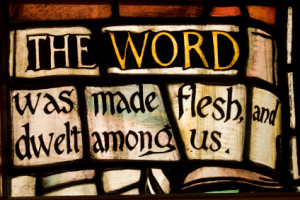 Forget for a moment that you live 2000 years after the death of Jesus Christ on the cross, and forget that you have the New Testament which tells you about who Jesus was and what He did. Imagine that you pick up an ancient history book and it tells you about three men who were put to death around 33 BC for religious and political crimes. Two of them were criminals and one was a rabble-rouser, a trouble-maker, and a blasphemer. If you knew nothing else about these three men, you would assume they were most likely guilty.
Forget for a moment that you live 2000 years after the death of Jesus Christ on the cross, and forget that you have the New Testament which tells you about who Jesus was and what He did. Imagine that you pick up an ancient history book and it tells you about three men who were put to death around 33 BC for religious and political crimes. Two of them were criminals and one was a rabble-rouser, a trouble-maker, and a blasphemer. If you knew nothing else about these three men, you would assume they were most likely guilty.
Imagine furthermore that rather than living 2000 years after the fact, you were a Jewish person who lived at the time of Jesus. If you had heard anything from the Jewish rabbis of your day, you would know that this man named Jesus was a threat to the peace, order, safety, and security of your life within the Roman Empire.
If Jesus was the Messiah, as He claimed, He would rise up in revolt against the Roman invaders, but since He clearly did not want to go to war with the Romans, and since He often said things that directly challenged the traditions and teachings of the religious leaders, and sometimes He even seemed to say blasphemous things about the Temple and about YHWH Himself, well, Jesus was guilty. He had to die because He was guilty.
And when He did die, they hung Him on a cross. It was a gruesome sight, but that was evidence enough of His guilt. God had seen fit to judge this blasphemer named Jesus by hanging Him on a tree, for as the Scriptures say, “Cursed is everyone who hangs on a tree.”
Yes, this was evidence that God also was upset about what this man named Jesus was teaching, and had seen fit to make Him a public spectacle in the sight of all so that nobody would ever again seek to challenge the teachings of the religious leaders or the traditions of the Jewish people.
Yes, if you were a Jew living 2000 years ago, and if you saw Jesus hanging on the cross, you most likely would have thought that He was a guilty criminal who had come under the curse of God. You would be revolted and sickened by His appearance.
But looking back now, we know that Jesus was not guilty. He did not sin. He died a criminal’s death because He went there willingly, as a sacrifice for the sins of the whole world, to take our sins upon Himself and bear them into death. But we only know this because Jesus rose from the dead and told His disciples that this is what happened, and the disciples taught it to others and wrote about it in the Bible, and the Apostle Paul—the greatest theologian in history—wrote about this theme in many of his letters.

So it is also with God.
From our human perspective, a God who enters into human affairs in the way that God did in the Old Testament looks guilty. Just like Jesus on the cross. As outsiders, when we look upon the appearance of God in the Old Testament, we see a guilty criminal who is doing things that nobody should ever do. This also is exactly the way some people looked at Jesus. When we read about some of the brutal and bloody things that the Israelites did in God’s name, God appears ugly and revolting. In many of the depictions there is no beauty or comeliness, that we should desire Him. He is despised and rejected by many. We do not esteem Him. Just like Jesus (cf. Isa 53:1-3).




 One common objection to the proposal I am making in my series on how to understand the violence of God in the Old Testament (see the link list below) is that this view seems to make God out to be a liar.
One common objection to the proposal I am making in my series on how to understand the violence of God in the Old Testament (see the link list below) is that this view seems to make God out to be a liar.
 Nelson Mandela once said “Courage was not the absence of fear, but the triumph over it. The brave man is not he who does not feel afraid, but he who conquers that fear.”
Nelson Mandela once said “Courage was not the absence of fear, but the triumph over it. The brave man is not he who does not feel afraid, but he who conquers that fear.”

 Though we can never know the spiritual agony that Jesus experienced on the cross, we see hints of it in what He says. For example, His fifth statement from the cross is “My God, My God, Why have you forsaken me?” Jesus, as the second person of the Trinity, has had constant fellowship with God the Father for all eternity. What must it have been like for Him now to have that relationship severed and broken? What must it have felt like for Jesus when our sin separated Him from God? Our sin broke the eternal fellowship of the Godhead!
Though we can never know the spiritual agony that Jesus experienced on the cross, we see hints of it in what He says. For example, His fifth statement from the cross is “My God, My God, Why have you forsaken me?” Jesus, as the second person of the Trinity, has had constant fellowship with God the Father for all eternity. What must it have been like for Him now to have that relationship severed and broken? What must it have felt like for Jesus when our sin separated Him from God? Our sin broke the eternal fellowship of the Godhead! Scholars widely disagree about what happened to Jesus after He died. Some believe He
Scholars widely disagree about what happened to Jesus after He died. Some believe He 
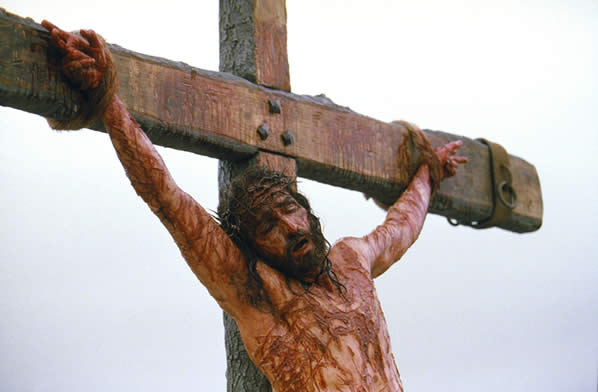
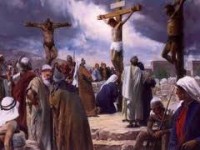 The arm of the cross, or the horizontal part was then attached to the upright piece. Most often, we think of the cross as the one we so often see in pictures, with the horizontal piece about one-fourth to one-third of the way down the vertical piece. But historians and archeologists tells us that probably, the shape of the cross that Christ died on was more like a capital T than a lower case t. This piece was known as the patibulum, and it is this form of the cross that was most often used in Christ’s day. There was also an X-shaped cross, but this was rarely used in the days of Jesus.
The arm of the cross, or the horizontal part was then attached to the upright piece. Most often, we think of the cross as the one we so often see in pictures, with the horizontal piece about one-fourth to one-third of the way down the vertical piece. But historians and archeologists tells us that probably, the shape of the cross that Christ died on was more like a capital T than a lower case t. This piece was known as the patibulum, and it is this form of the cross that was most often used in Christ’s day. There was also an X-shaped cross, but this was rarely used in the days of Jesus.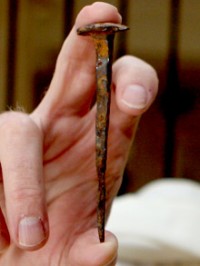 If the authorities wanted a quicker death, they would generally drive nails into the hands and feet of the victim. The nails were not driven into the palms of the hands as most pictures show. Rather, they were driven through the wrist near the hands. If the spikes were driven through the hands, the weight of the person would cause the nail to rip through the hands and the victim would fall off the cross. But when driven through the wrist, the set of bones which attach the wrist to the hand keep the hands from ripping free.
If the authorities wanted a quicker death, they would generally drive nails into the hands and feet of the victim. The nails were not driven into the palms of the hands as most pictures show. Rather, they were driven through the wrist near the hands. If the spikes were driven through the hands, the weight of the person would cause the nail to rip through the hands and the victim would fall off the cross. But when driven through the wrist, the set of bones which attach the wrist to the hand keep the hands from ripping free. To take a breath, the victim would have to stand up on the nail through his feet, causing excruciating pain in the feet, but enabling him to take a breath. As long as he was putting all his weight on his feet, he could breathe. But when that became too painful, he would slump back down, putting all his weight on his wrists, and also returning to the condition of not being able to breathe.
To take a breath, the victim would have to stand up on the nail through his feet, causing excruciating pain in the feet, but enabling him to take a breath. As long as he was putting all his weight on his feet, he could breathe. But when that became too painful, he would slump back down, putting all his weight on his wrists, and also returning to the condition of not being able to breathe.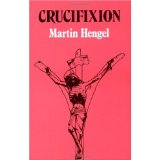

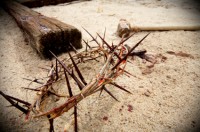 The half-fainting Jesus is then untied and allowed to slump to the stone pavement, soaked with His own blood. The Roman soldiers see an opportunity to make a joke out of Him. Here is a provincial Jew claiming to be a king, but was now barely alive. So they throw a robe across His shoulders and place a stick in His hand for a scepter. To make the travesty complete, a small bundle of flexible branches covered with long thorns are woven into the shape of a crown and pressed into His scalp. Since head wounds always bleed a lot, the blood runs down His face and into His eyes.
The half-fainting Jesus is then untied and allowed to slump to the stone pavement, soaked with His own blood. The Roman soldiers see an opportunity to make a joke out of Him. Here is a provincial Jew claiming to be a king, but was now barely alive. So they throw a robe across His shoulders and place a stick in His hand for a scepter. To make the travesty complete, a small bundle of flexible branches covered with long thorns are woven into the shape of a crown and pressed into His scalp. Since head wounds always bleed a lot, the blood runs down His face and into His eyes.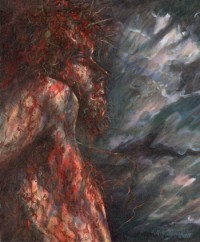 Most artists do not even come close in depicting what Jesus looked like after all of this torture. He was probably the most inhuman looking thing you’ve ever seen. The prophet Isaiah wrote of the Messiah: “They shall see the Servant of God beaten and bloodied, an object of horror; so disfigured many were astonished. His face and His whole appearance were marred more than any man’s, one would scarcely know it was a person…” (Isa 52:14).
Most artists do not even come close in depicting what Jesus looked like after all of this torture. He was probably the most inhuman looking thing you’ve ever seen. The prophet Isaiah wrote of the Messiah: “They shall see the Servant of God beaten and bloodied, an object of horror; so disfigured many were astonished. His face and His whole appearance were marred more than any man’s, one would scarcely know it was a person…” (Isa 52:14).
 His mission of atonement is nearly complete. Finally, He can allow His body to die. With one last surge of strength, He presses His torn feet against the nail, straightens His legs, looks into heaven, and utters His seventh and last cry, “Father, into your hands I commit my spirit.”
His mission of atonement is nearly complete. Finally, He can allow His body to die. With one last surge of strength, He presses His torn feet against the nail, straightens His legs, looks into heaven, and utters His seventh and last cry, “Father, into your hands I commit my spirit.”